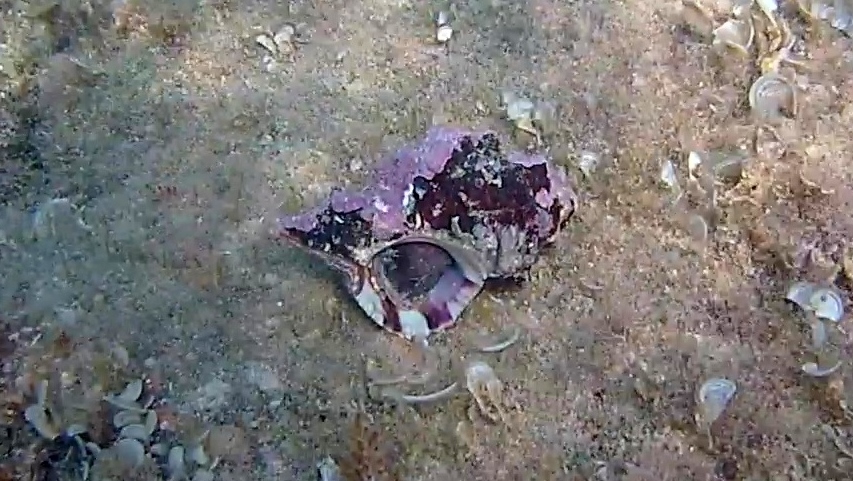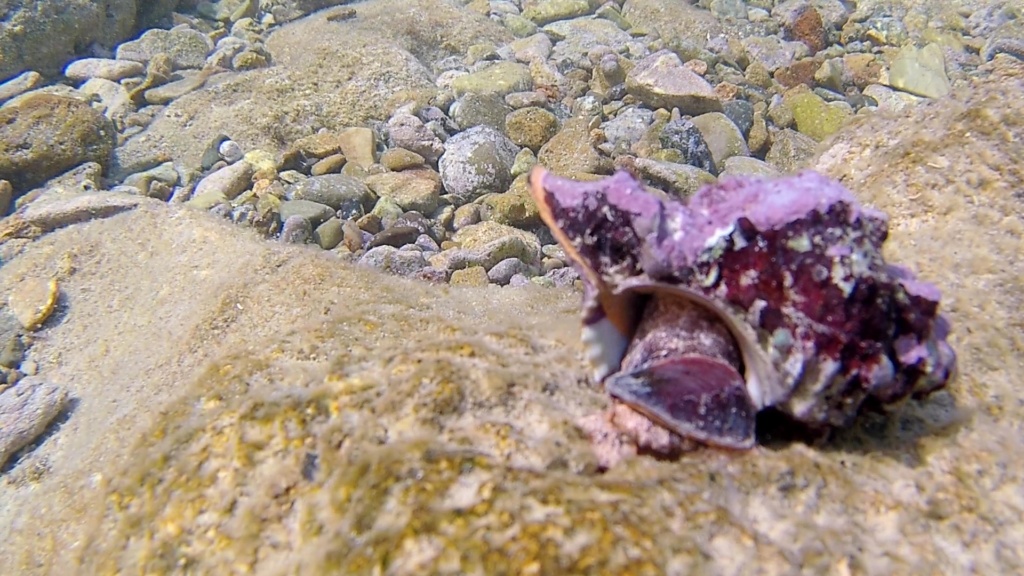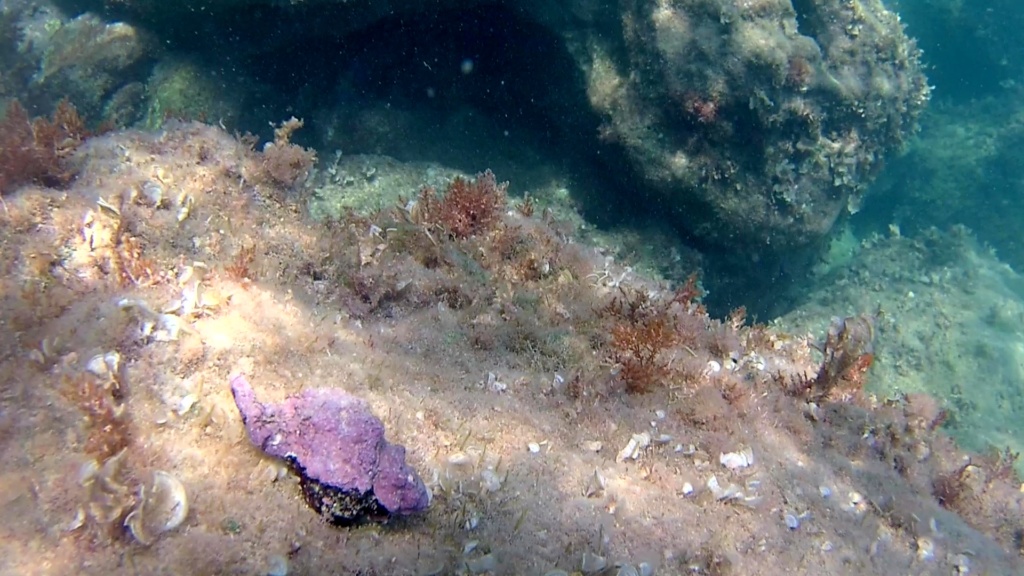Murex - Hexaplex trunculus
Hexaplex trunculus (also known as Murex trunculus, Phyllonotus trunculus,) is a medium-sized sea snail, a marine gastropod mollusk in the family Muricidae, the murex shells or rock snails. Murice Hexaplex Trunculus intotheblue.it Murex trunculus Phyllonotus

This sea snail is historically important because its hypobranchial gland secretes a mucus used to create a distinctive purple-blue.
Hexaplex trunculus has a broadly conical shell about 4 to 10 cm long. It has a rather high spire with seven angolate whorls. Hexaplex trunculus is a very common mollusk throughout the Mediterranean sea and can be easily found.

The shell is variable in sculpture and coloring with dark banding, in four varieties. The ribs sometimes develop thickenings or spines and give the shell a rough appearance.
As ancient dye
The purple dye originated in Phoenician colonies. The Phoenician port cities on the coast of current-day Lebanon, exported the dye across the Mediterranean.
Carthaginian Murex pigment from Tunisia
The ancient method for mass-producing purple-blue dye from Hexaplex trunculus has not been successfully reproduced; the purplish hue quickly degrades, resulting in blue only. Nonetheless, archeologists have confirmed Hexaplex trunculus as the species used to create the purple-blue dye; large numbers of shells were recovered from inside ancient live-storage chambers that were used for harvesting. Apparently, 10- to 12,000 murex yielded only one gram of dye. Because of this, the dye was highly prized. Also known as Royal Purple, it was prohibitively expensive and was only used by the highest ranking aristocracy.

A similar dye, Tyrian purple, which is purple-red in color, was made from a related species of marine snail, Murex brandaris. This dye (alternatively known as imperial purple, see purple) was also prohibitively expensive.
Jews used the pigment from the shells to create a sky-blue, tekhelet, dye to put on the fringes that the Torah specifies for the corner of the prayer shawl. There are many opinions about how the tzitzit are tied. This blue dye was made by taking the yellow dye solution and letting it sit in the sunlight, and then dipping the wool in it. This dye was lost to history until it was rediscovered by Professor Otto Elsner of the Shenkar College of Fibers in Haifa. Since then, it has been re-introduced as the authentic ticheiles and has once again been reenstated to the Jewish garment [4] although only with limited acceptance.

Purple was, in the ancient world, a rare and precious dye, which was obtained through elaborate and expensive procedures.
In the first millennium BC the most renowned producers of purple were the Phoenicians, who exported this coloring wherever it was required, deriving great profits from it. With time, the association between the Phoenicians and the purple became so close that those who said “Phoenician” used to say “purple”. In fact, the term “Phoenicians” we use derives from the Greek Phòinikes and is connected with phòinix, “purple-red”.

The Greek myth also linked the origin of purple to the Phoenicians. To invent the tincture would have been Heracles, who would have used it for the mantle of the legendary Phoenician king Phoenix. The king, enchanted by the beauty of that color, would have decreed that from then on only the sovereigns would have had the right to wear purple garments.
The purple is a dye produced by the secretion of some molluscs gastropods that in ancient times were available in great abundance in the shallow waters of all the coasts of the Mediteraneo.

The molluscs, probably caught by traps (wicker baskets) with baits, were placed in large tanks, where they were required to purge for a short time. The breakage and elimination of the shells that enclosed them was then proceeded. The shellfish were then macerated for a long time in the tanks with the addition of water and salt. The coloring matter that was forming was then washed with other water, and then boiled over a low flame for several days in large lead containers, while the debris and impurities were removed. Murice Hexaplex Trunculus intotheblue.it Murex trunculus Phyllonotus
https://en.wikipedia.org/wiki/Hexaplex_trunculus
Gallery
Video Gallery
